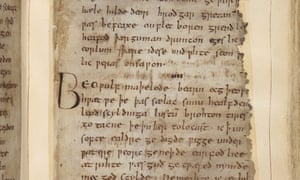via Boing Boing by David Pescovitz

Brooklyn's LES Ecology Center maintains an incredible library of vintage consumer electronics cherry-picked from the relentless flow of e-waste streaming through their facility. From hulking videocassette decks to curious CRTs, classic video game systems to iconic landline telephones, the E-Waste Warehouse Prop Library provides prop rentals for film, television, and theatrical productions. They should also host birthday parties.
Continue reading [and watch a video]
==============================
via Arts and Letters Daily: Clare Bucknell in the Literary Review
If you had been in the vicinity of the Turk’s Head Tavern on Soho’s Gerrard Street on a Friday evening in the second half of the 18th century, you might have recognised a number of famous men disappearing up the stairs to a private room.
The Club, as Leo Damrosch explains in this group biography of its members, was a dining, drinking and debating society for some of the leading lights of the age, established by Samuel Johnson and the portraitist Joshua Reynolds in 1764 to lift Johnson’s spirits as he struggled to complete his edition of Shakespeare’s plays. At its high point in the 1770s it brought together Johnson and Reynolds, James Boswell, Edmund Burke, Edward Gibbon, Richard Brinsley Sheridan, Oliver Goldsmith and David Garrick.
The Club: Johnson, Boswell, and the Friends Who Shaped an Age
By Leo Damrosch
Yale University Press 488pp £20 order from our bookshop
Continue reading==============================
via Interesting Literature
The meaning of one of the oldest fairy tales in the world – analysed by Dr Oliver Tearle

Iona and Peter Opie, in their The Classic Fairy Tales, call ‘Beauty and the Beast’ the most symbolic fairy tale after Cinderella, and ‘the most intellectually satisfying’. It’s also one of the oldest: we can trace the archetypal versions of ‘Beauty and the Beast’ back some 4,000 years, making it over 1,000 years older than Homer. If that doesn’t make the hairs stand up on the back of your neck a little, what will it take?
Continue reading
==============================
via Ancient Origins

3D reconstruction of an ancient Mesopotamian city. (Satori / Adobe Stock)
A 4,000-year-old lost city has been discovered in Iraqi Kurdistan, according to researchers.
“We weren’t expecting to discover a city here at all,” said Christine Kepinski, who explored the site, according to the French National Center for Scientific Research journal [includes some stunning images].
The excavation of the site, known as Kunara and located near the city of Sulaymaniyah, was only possible after Iraqi dictator Saddam Hussein was deposed in 2003. Researchers also noted that the ISIS terrorist group’s presence in Iraq also hampered their efforts.
Continue reading
==============================
via the OUP blog by Jeffrey Auberbach

British Empire map, 1886, printed on linen. From the British Library. CC0 via Wikimedia Commons
Boredom is a pervasive problem. Teenagers suffer from it. Workers are afflicted by it. Psychologists research it. Academic conferences are devoted to it. There is even evidence that you can die of it. And while there are those who claim that boredom can foster creativity, many people would rather give themselves an electric shock than be bored.
Continue reading
==============================
Linking our prayers and our purchases, our art and our labour.
via Arts and Letters Daily: Alan Jacobs in Cardus
The Victorian sage John Ruskin (1819–1900) was a titanic figure in his own lifetime, and has not been wholly forgotten. But he is perhaps best remembered today for the bizarre incoherence of his romantic life, and especially for his unconsummated marriage to Effie Gray, which has been the subject of books, television and radio programs, and movies. Does he still matter? I argue that he does, because he is the deepest inquirer I know into the ways that human making shapes and is shaped by the material conditions of human lives, and how the relationship between that making and those conditions has enormous consequences for the spiritual lives of human beings.
Continue reading
==============================
via the Guardian by Nicola Davis
Debate over whether poem was written by multiple authors or one has raged for years

The Beowulf manuscript at the British Library in London. Photograph: British Library
Beowulf, the epic poem of derring-do and monsters, was composed by a single author, research suggests, pouring cold water on the idea it was stitched together from two poems.
One of the most famous works in Old English, Beowulf tells of the eponymous hero who defeats the monster Grendel and his mother, thereby rescuing the Danes from a reign of terror, before returning to his homeland and later dying in a battle with a dragon.
But the poem has been the subject of a long-running debate. While some argued the work is the product of multiple poets, others – including the scholar and Lord of the Rings author JRR Tolkien – have said the evidence suggests it is a single poet’s work.
Continue reading
==============================
via Boing Boing by Rob Beschizza

Posted on YouTube without description, via Reddit, where commenter VikingMart identifies the location as Anegada in the British Virgin Islands.
Continue reading and also watch the video
==============================
Did a poorly understood ancient civilization somersault over charging bulls?
via the Big Think blog by Matt Davis
- The Minoan civilization, which existed on the island of Crete nearly 5,000 years ago, produced a treasure trove of artwork showing a unique sport or ritual: men leaping over charging bulls
- Scholars have argued over whether the Minoans actually performed this dangerous activity, though the evidence seems to suggest that they did.
- If so, modern bull-leaping sports, such as those practiced in France and Spain, may have their roots in ancient Minoa.
==============================
via About History
Grenadiers – selected infantry units and / or cavalry, originally intended for the assault of enemy fortifications, mainly in siege operations.
Grenadiers were armed with hand grenades and firearms. Hand grenades used to be called “grenades” or “grenadics”; they were a hollow cast-iron ball filled with gunpowder with a wick; they were used for throwing at enemy fortifications. Given the short range of the flight of grenade, the military man needed maximum strength, courage, resourcefulness, fearlessness and skill to get to the right distance. From the grenades went the name of units using this type of weapon. Subsequently, grenadiers began to call the elite units of the line infantry.
Continue reading
No comments:
Post a Comment